- News
- Reviews
- Bikes
- Accessories
- Accessories - misc
- Computer mounts
- Bags
- Bar ends
- Bike bags & cases
- Bottle cages
- Bottles
- Cameras
- Car racks
- Child seats
- Computers
- Glasses
- GPS units
- Helmets
- Lights - front
- Lights - rear
- Lights - sets
- Locks
- Mirrors
- Mudguards
- Racks
- Pumps & CO2 inflators
- Puncture kits
- Reflectives
- Smart watches
- Stands and racks
- Trailers
- Clothing
- Components
- Bar tape & grips
- Bottom brackets
- Brake & gear cables
- Brake & STI levers
- Brake pads & spares
- Brakes
- Cassettes & freewheels
- Chains
- Chainsets & chainrings
- Derailleurs - front
- Derailleurs - rear
- Forks
- Gear levers & shifters
- Groupsets
- Handlebars & extensions
- Headsets
- Hubs
- Inner tubes
- Pedals
- Quick releases & skewers
- Saddles
- Seatposts
- Stems
- Wheels
- Tyres
- Health, fitness and nutrition
- Tools and workshop
- Miscellaneous
- Cross country mountain bikes
- Tubeless valves
- Buyers Guides
- Features
- Forum
- Recommends
- Podcast
review
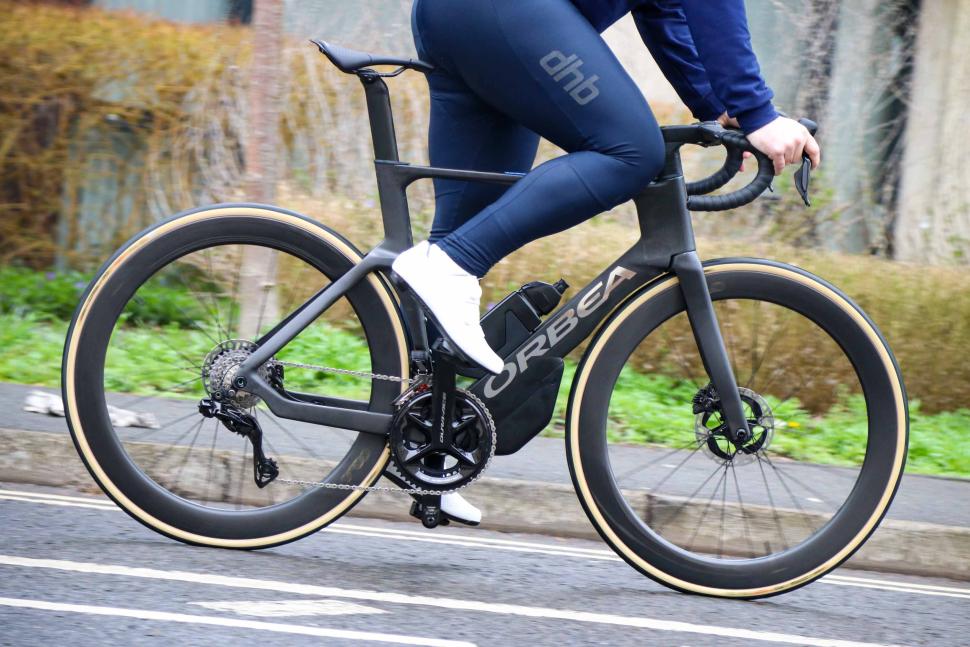 Orbea Orca Aero M10iLTD 2024
Orbea Orca Aero M10iLTD 2024£11,499.00
VERDICT:
Stunningly fast without sacrificing versatility, handling or comfort
Real-world fast
Great handling
Heavier than the competition
Aero handlebar makes fitting tri bars tricky
Weight:
8,090g
Contact:
At road.cc every product is thoroughly tested for as long as it takes to get a proper insight into how well it works. Our reviewers are experienced cyclists that we trust to be objective. While we strive to ensure that opinions expressed are backed up by facts, reviews are by their nature an informed opinion, not a definitive verdict. We don't intentionally try to break anything (except locks) but we do try to look for weak points in any design. The overall score is not just an average of the other scores: it reflects both a product's function and value – with value determined by how a product compares with items of similar spec, quality, and price.
What the road.cc scores meanGood scores are more common than bad, because fortunately good products are more common than bad.
- Exceptional
- Excellent
- Very Good
- Good
- Quite good
- Average
- Not so good
- Poor
- Bad
- Appalling
The Orbea Orca Aero M10iLTD is incredibly fast – basically time trial bike fast but with the versatility and easy-to-live-with riding position of a road race bike. The UCI isn't a fan of fairings, but unless you are a pro you can exploit the 'aeroness' of the storage box and revel at how well this package cuts through the air – and your bank account.
Check out our guide to the best aero road bikes for more options.
> Buy now: Orbea Orca Aero M10iLTD for £11,499 from Orbea
Orbea Orca Aero M10iLTD: Ride
While the constant marketing blurb of a few watts saved here and there at this speed and that can get a little tedious, there is no denying that this bike is fast, very fast!
With the aero bottle and the storage box beneath the down tube (both of which make the bike more slippery through the air) the Orca Aero looks quick just sat still, and rather aggressive too in this raw carbon finish. Add in the sculpted seat and down tubes that provide minimal clearance around the tyres, and this is one very purposeful bike.
In the opening paragraph I alluded to it being like a time trial bike, and after many years of racing against the clock on very aero machines it's amazing how close aero road bikes have become in terms of real-world efficiency and speed.
Get narrow and low, and the Orca Aero absolutely flies, getting noticeably more efficient as the speeds increase. Add to that the massive amount of stiffness afforded by the large-section tubes and this bike not only cuts through the air, but it also handled all the power I could put through it with ease, making it feel even more efficient.
Considering everything included in the package, like the aero add-ons and deep-section wheels, at 8kg this is a reasonably light bike too – not something you can always say when discussing bikes of this style. Although it comes in heavier than many competitors, it still feels responsive and eager to be pushed out of a bend or when accelerating. It's also a capable climber.
Some aero bikes are designed purely for efficiency at speed, and that is normally associated with straight line speed, but I found the Orca Aero to ride just like a standard road bike. By that I mean the steering is quick and reactive, regardless of where you are riding.
For a bike of this size (55cm), it has quite a short wheelbase, well under a metre, which helps it change direction quickly and feel nimble, allowing you to descend with confidence even on twisty, quick sections of downhill.
The handling is very positive too, as in it's quick and direct but remaining just on the controllable side of twitchy.
The overall ride is firm, as you'd expect from the large section tubing and deep-section wheels, but it doesn't rattle you about, and isn't what I'd class as harsh either. It doesn't soak up the bumps on poor road surfaces like some plusher steeds can, but it is well within the comfort limits I'd expect for a bike of this ilk.
It'll take up to 30mm tyres, too, which can bring some relief from the bumps should you require it.
Orbea Orca Aero M10iLTD: Frame and fork
On its website Orbea says it measures real-world power savings in an indoor velodrome, getting riders to ride around at a series of fixed speeds in repeatable conditions, and adding up the myriad tiny improvements the Orca Aero reduces drag by 15 watts at 40kph and 28 watts at 50kph – though what it's being compared with isn't mentioned.
Orbea has gone for a horizontal top tube and seatstays (well, the top bit), which it says improves airflow, while the profiles of the down tube and seat tube are designed to work with 25-28mm tyres.
The fork has been optimised for deep-section wheels, and Orbea has designed the cockpit and seatpost to reduce drag.
Personally, I think it is a good-looking frameset, especially the way the head tube, fork and down tube are integrated, as are the seat tube and seatstays. It looks super smooth.
You get a choice of three colour options, or you can go fully customised.
There are seven sizes available, ranging from 47cm to 60cm, which Orbea says fits riders between 61in (5ft 1in/155cm) and 81.5in (6ft 9.5in/207cm). It also has recommended bar widths and stem lengths for each frame size.
We have the 55cm, which has a 544mm seat tube, 557.5mm top tube and 155mm head tube (and yes, I'm fully aware that the number of spacers the Orbea is running isn't the most aero setup).
Angles-wise, we're talking 73 degrees for the head, and a 73.5-degree seat angle. All of this adds up to stack and reach figures of 562mm and 391mm which are very typical for a road bike of this size.
What else? Ah, yes, that short wheelbase. It is just 986.4mm, which is what gives the bike its nimbleness, with equally short chainstays of just 408mm. The bottom bracket drop is 74mm.
Orbea Orca Aero M10iLTD: Groupset
The M10iLTD model we have here sits at the top of the line-up and comes with the latest 12-speed Shimano Dura-Ace Di2 groupset, which we reviewed separately in 2021.
It'll come as no surprise to you that the gearing is aimed at speed, with a 52/36-tooth semi-compact chainset, mated to an 11-30T cassette.
This gives a usable spread of ratios for almost every eventuality, from powering down a flat dual carriageway to tackling rolling terrain. Should you ride in hillier terrain, Orbea does give you some customisation, so you could select an 11-34T cassette, or even a 50/34T chainset.
> Which chainset is right for you? Should you choose a standard, a compact or something else?
In terms of performance, Dura-Ace is very hard to fault. I have said in previous reviews that I do find the gear change action almost too light, personally; I still like that mechanical interaction as you push a lever and you feel the chain snick up or down the cassette and across chainrings.
On a bike like this, though, the sheer speed and slickness of the change works very well indeed. You can shift under load, even when out of the saddle, and the performance isn't affected; it really is a very impressive set of components.
The braking performance is just as solid with the 160mm front/140mm rear rotors bringing you to a complete stop quickly, with a huge amount of modulation on offer when you want to control your speed rather than quash it entirely.
Orbea Orca Aero M10iLTD: Finishing kit
For the cockpit Orbea hasn't gone down the fully integrated route, so you can swap in different handlebars without too much faffing. Which is good, because If I was going to be using the Orca Aero for time trialling or triathlons, I'd want to be using tri-bars for full aero benefit, so it is a shame that the OC Road Aero RA11 Carbon bar doesn't have a round area to fit them either side of the standard 31.8mm clamping area.
That aside, it's a nicely shaped bar that's not too extreme in any of its dimensions. I found the drops easy to use, and they balance impressive stiffness with comfort. The bar's design also allows for 15 degrees of rotation without affecting the aerodynamics or hose routing.
The stem is alloy and is designed to direct the hydraulic brake hoses into the frame via the top of the head tube. Like most stems, it sits there and does its job without fuss.
The aero carbon seatpost is designed to integrate with the frame, and considering its large profile it doesn't bring any harshness to the ride. The clamp is also simple to use and held onto the saddle without issue, plus by removing, rotating and refitting the clamps you can choose either 0mm or 25mm of setback.
The saddle is a Prologo Scratch M5 PAS which I liked a lot. I seem to get on well with Prologo saddles, and this one was no exception. It worked in both an upright and an aero position, its short-nose design helping the latter simply by having less material in the way when you are crouched over.
It's not often we talk about bottles and cages in a review, but as they make up part of the aero package it would be rude not to.
Both bottle and cage are designed to be aerodynamic and that has come at the cost of ease of use. It's just not that easy to remove and reload the bottle into the cage, and it is also more difficult to drink from on the fly compared with a round body. It's not a big deal for me as I don't really drink much on the bike, but if you do you can swap them out for standard cages and bottles, if you don't mind sacrificing a bit of aero efficiency.
The storage container under the down tube can also be removed should you so desire, although I did find it quite useful. With the inclement weather I've been riding in I could easily stuff a waterproof jacket in it and a few other bits and pieces, therefore freeing up jersey pocket space.
Orbea Orca Aero M10iLTD: Wheels & tyres
This Orca comes decked out with Oquo RP57LTD wheels, which have a UK rrp of £1,999.
As the name suggests, they are 57mm deep, and they have an internal width of 21mm which makes them well suited to the tyre widths afforded by the Orca Aero's frame and fork. The rims are hooked, too, so you aren't limited to tubeless tyres only.
The rim uses angled spoke holes to match the dishing required to give the spokes a perfectly aligned route from the rim bed to the Zipp Cognition VS2 hubs.
It's a quality wheelset offering loads of lateral stiffness as well as an aerodynamic boost. With a claimed weight of 1,500g they aren't exactly chunky for deep-section wheels either.
Wrapped around them we have a set of Vittoria Corsa Pro tyres which are lovely and supple, as well as being grippy and fast rolling – everything you want on a bike of this style.
Orbea Orca Aero M10iLTD: Value
On Orbea's website the M10iLTD starts at £10,889 with either Oquo RP35TEAM or RP45TEAM wheels, or £11,499 with the RP57LTDs that we have fitted.
The range does start a lot lower, though, at £4,399 for the M30LTD which uses Shimano's 105 mechanical groupset and Oquo RP35PRO wheels, and there are a good handful of bikes in between to suit a variety of budgets.
Away from a wind tunnel it's hard to tell how much quicker one aero bike is against another, so I'm not including those metrics in any comparison here.
We have tested a lot of aero road bikes spread across the price spectrum from affordable through to downright expensive, and one of our favourites is the Giant Propel; Mat recently reviewed the Advanced Pro 1 model, which costs £5,499.
The Advanced SL 0 is the range topper, and the one that was brought into the office weighed just 6.9kg in a M/L size, so much lighter than the Orbea. With its Dura-Ace Di2 groupset and deep-section Cadex wheels, the SL 0 will set you back £11,999.
> Buyer’s Guide: The best road bikes, from £300 to £12,000
Scott's Foil RC Pro is another road bike focusing heavily on aerodynamics and which Aaron described as 'possibly the best aero road bike available right now' when he reviewed it in 2023.
The size small bike he reviewed weighed 7.35kg and also came equipped with Dura-Ace Di2, plus deep-section wheels from the same groupset. It was priced at £10,499 at the time, but the 2024 model has seen a massive drop to £8,899, although it now has Syncros Capital aero wheels.
If you want to do aero on a budget, though, you can't look past the Orro Venturi STC, a bike that I've reviewed many times and find absolutely stunning to ride. The latest version I rode was equipped with SRAM Force eTap, Vision deep-section wheels and carbon finishing kit for £4,999.99. It weighed 7.55kg in a medium.
Orro offers a Signature Limited Edition model which comes with Dura-Ace Di2, Zipp 404 Firecrest wheels, BlkTec carbon finishing kit and a Selle Italia SLR Boost Carbon saddle for £6,599.99!
Orbea Orca Aero M10iLTD: Conclusion
Orbea has done a great job of creating an aero road bike that doesn't have to be ridden flat out to be enjoyed. In fact I was impressed with how well it works in the corners and on the descents. It has a great ride quality too – something not often said about an aero bike. It is pricier than some of the competition, though, and by a fair chunk, and it's a bit on the weighty side.
It's definitely a bike for those who place speed and aero efficiency over everything else, triathletes or time triallists maybe, or those who favour racing on flat routes, though in reality anyone who wants a fast bike is going to enjoy the speed on offer here.
Verdict
Stunningly fast without sacrificing versatility, handling or comfort
road.cc test report
Make and model: Orbea Orca Aero M10i LTD
Size tested: 55
About the bike
List the components used to build up the bike.
DRIVETRAIN
CRANKSET
Shimano Dura-Ace R9200 36x52t
SHIFTERS
Shimano R9270
CASSETTE
Shimano Dura-Ace R9200 11-30t 12-Speed
REAR DERAILLEUR
Shimano Dura-Ace Di2 R9250
FRONT DERAILLEUR
Shimano Dura-Ace Di2 R9250
CHAIN
Shimano CN-9100
COCKPIT
HANDLEBAR
OC Road Aero RA11 Carbon, Reach 80, Drop 125
STEM
OC Road Performance RP10, -8°
BRAKES
Shimano R9270 Hydraulic Disc
ROTORS
160mm Front /140mm Rear
WHEELS
Oquo Road Performance RP57LTD
TYRES
Vittoria Corsa Pro G2.0 TLR 700x28c
FRONT WHEEL AXLE
Orbea Thru Axle 12x100mm M12x2 P1 Lite
REAR WHEEL AXLE
Orbea Thru Axle 12x142mm M12x2 P1 Lite
COMPONENTS
SEATPOST
OC Road Aero RA10 Carbon, SB0/25, w/Micro tilt adjustment
SADDLE
Prologo Scratch-M5 Pas T2.0 size 140mm
ACCESSORIES
HANDLEBAR TAPE
Orbea Anti-Slippery/Shock Proof
HYDRATION
OC Aero Bottle RA10 (550ml) + Carbon Cage Kit RA10
STORAGE
OC Aero Toolbox TB01PP
Tell us what the bike is for and who it's aimed at. What do the manufacturers say about it? How does that compare to your own feelings about the bike?
Orbea says, "It's hard to beat the sensation of power that comes from a great aero bike. What rider is ambivalent about a machine that is designed to give back free watts? Is there a competitor who doesn't grasp every last advantage in the battle for speed? Orca Aero delivers these prizes – along with the willingness to to go all-out, all day, without hesitation. Long live the bike that balances the emotional and rational desires inside each of us – Long live Aero."
The Orca Aero is a very quick aero bike that doesn't compromise road bike traits in other places.
Where does this model sit in the range? Tell us briefly about the cheaper options and the more expensive options
This is the second model in the range, sitting just below the Lotto Disney Replica model at £11,999. The range starts just above £4K and is made up of eight builds and two framesets.
Frame and fork
Overall rating for frame and fork
8/10
Tell us about the build quality and finish of the frame and fork?
Very well-made frame and fork that look the business in this raw carbon finish.
Tell us about the materials used in the frame and fork?
The frame and fork use Orbea's OMX grade carbon fibre.
Tell us about the geometry of the frame and fork?
The geometry is fairly typical of a fast road bike, as in quite aggressive angles, but Orbea has also kept the wheelbase very short which makes the Orca handle really well and feel very nimble.
How was the bike in terms of height and reach? How did it compare to other bikes of the same stated size?
Height and reach are also fairly typical with no real surprises.
Riding the bike
Was the bike comfortable to ride? Tell us how you felt about the ride quality.
Overall, the comfort was impressive, especially considering how stiff the Orbea is.
Did the bike feel stiff in the right places? Did any part of the bike feel too stiff or too flexible?
Stiffness is very good throughout the frame and fork, but especially so at the lower end around the bottom bracket.
How did the bike transfer power? Did it feel efficient?
Power transfer is really good. A combination of the stiffness and those short chainstays means this thing flies when you stamp on the pedals.
Was there any toe-clip overlap with the front wheel? If so was it a problem?
No.
How would you describe the steering? Was it lively neutral or unresponsive? Lively.
Tell us some more about the handling. How did the bike feel overall? Did it do particular things well or badly?
This is a quick-handling race bike which just stays on the easy side of twitchy.
Which components had the most effect (good or bad) on the bike's comfort? would you recommend any changes?
The saddle is very comfortable, and I liked the suppleness of the Vittoria tyres.
Which components had the most effect (good or bad) on the bike's stiffness? would you recommend any changes?
The handlebar and stem are stiff enough to cope with out-of-the-saddle efforts without being too firm for comfort.
Which components had the most effect (good or bad) on the bike's efficiency? would you recommend any changes?
I wouldn't change anything; this is a fast and efficient bike.
Rate the bike for efficiency of power transfer:
9/10
Rate the bike for acceleration:
8/10
Rate the bike for sprinting:
8/10
Rate the bike for high speed stability:
8/10
Rate the bike for cruising speed stability:
8/10
Rate the bike for low speed stability:
7/10
Rate the bike for flat cornering:
8/10
Rate the bike for cornering on descents:
8/10
Rate the bike for climbing:
7/10
The drivetrain
Rate the drivetrain for performance:
9/10
Rate the drivetrain for durability:
8/10
Rate the drivetrain for weight:
8/10
Tell us some more about the drivetrain. Anything you particularly did or didn't like? Any components which didn't work well together?
Shimano Dura-Ace performs excellently and the choice of gearing works very well with a bike like the Orca Aero.
Wheels and tyres
Rate the wheels for performance:
8/10
Rate the wheels for durability:
8/10
Rate the wheels for weight:
8/10
Rate the wheels for comfort:
8/10
Tell us some more about the wheels.Did they work well in the conditions you encountered? Would you change the wheels? If so what for?
A decent weight for a 67mm-deep wheelset and they have plenty of lateral stiffness.
Rate the tyres for performance:
9/10
Rate the tyres for durability:
7/10
Rate the tyres for weight:
8/10
Rate the tyres for comfort:
8/10
Tell us some more about the tyres. Did they work well in the conditions you encountered? Would you change the tyres? If so what for?
Plush-feeling tyres that roll well and have impressive grip.
Controls
Rate the controls for performance:
8/10
Rate the controls for durability:
8/10
Rate the controls for weight:
8/10
Rate the controls for comfort:
8/10
Tell us some more about the controls. Any particularly good or bad components? How would the controls work for larger or smaller riders?
Everything is pretty much carbon fibre, as you'd expect for this money, and I love the ergonomics of each piece.
Your summary
Did you enjoy riding the bike? Yes
Would you consider buying the bike? Possibly, but there is a lot of cheaper competition in the aero world.
Would you recommend the bike to a friend? Yes
How does the price compare to that of similar bikes in the market, including ones recently tested on road.cc?
It's similarly priced to the top-end Giant Propel (although that one is a lot lighter), but it's much more expensive than a similarly specced Scott Foil or Orro Venturi.
Rate the bike overall for performance:
8/10
Rate the bike overall for value:
4/10
Use this box to explain your overall score
It's a pricey bike, and quite a heavy one (although weight isn't as important as aero on the flat) compared to the opposition, but it is definitely fast, and a really good, fun to bike ride.
About the tester
Age: 44
I usually ride: This month's test bike My best bike is: B'Twin Ultra CF draped in the latest bling test components
I've been riding for: Over 20 years I ride: Every day I would class myself as: Expert
I regularly do the following types of riding: time trialling, commuting, club rides, sportives, fixed/singlespeed,
Since writing his first bike review for road.cc back in early 2009 senior product reviewer Stu has tested more than a thousand pieces of kit, and hundreds of bikes.
With an HND in mechanical engineering and previous roles as a CNC programmer/machinist, draughtsman and development engineer (working in new product design) Stu understands what it takes to bring a product to market. A mix of that knowledge combined with his love of road and gravel cycling puts him in the ideal position to put the latest kit through its paces.
He first made the switch to road cycling in 1999, primarily for fitness, but it didn’t take long for his competitive side to take over which led to around ten years as a time triallist and some pretty decent results. These days though riding is more about escapism, keeping the weight off and just enjoying the fact that he gets to ride the latest technology as part of his day job.
Latest Comments
- chrisonabike 32 min 33 sec ago
Ah - but they are! They are dog walkers just wanting the right to walk (their dog). Of course they have to drive there....
- chrisonabike 40 min 16 sec ago
What wokery is this? I thought those tech-bros were there to save us from the "mind virus"?
- chrisonabike 26 min 38 sec ago
Sadly this is two very common patterns:...
- Secret_squirrel 9 hours 34 min ago
The Junior Minister appears pig ignorant of the law in this area....
- Sredlums 11 hours 51 min ago
Agreed, and to be clear, I don't expect everybody to be an expert in everything (I certainly am not). Ha, I worked at bike shops long enough to...
- hawkinspeter 13 hours 27 min ago
Opposition to controversial East Bristol Liveable Neighbourhood ‘will filter away’ say council bosses...
- quiff 15 hours 19 min ago
I know it's not the same, but they are saying Quest will have free highlights.
- chrisonabike 16 hours 41 min ago
Yeah but if you take away any chance of getting their licence back they'll turn into some kind of amoral road-bandit! * checks court records again ...
- mdavidford 17 hours 22 min ago
As far as I can see, the only place anything like that number appears in the source story is in the video, near the end, when they're chatting...
- David9694 18 hours 22 min ago
A338: Van flips over in crash on busy road https://www.bournemouthecho.co.uk/news/24981719.a338-van-flips-crash-bus... 40 mph zone




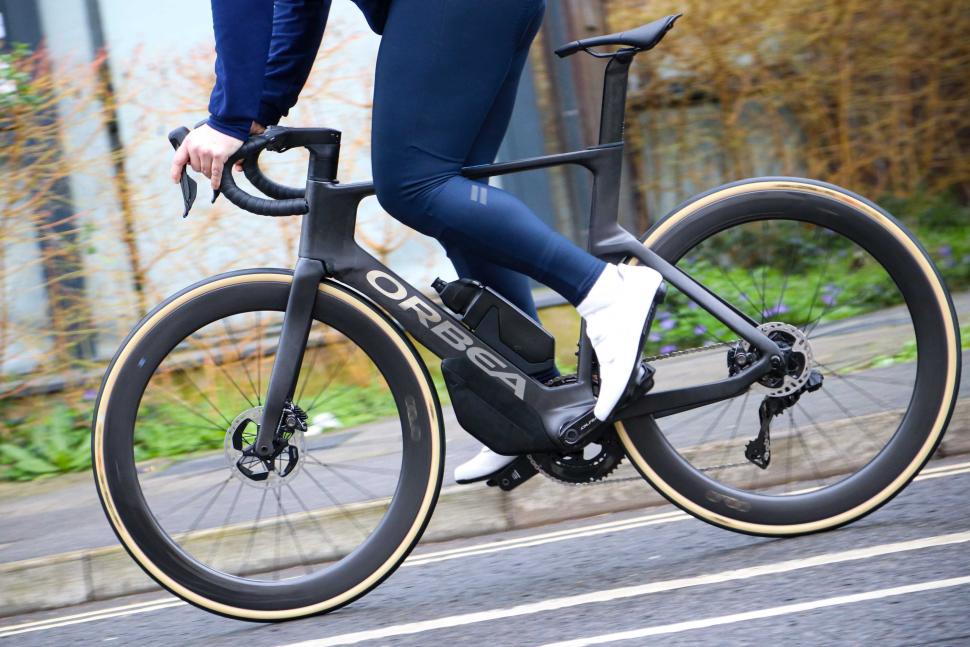
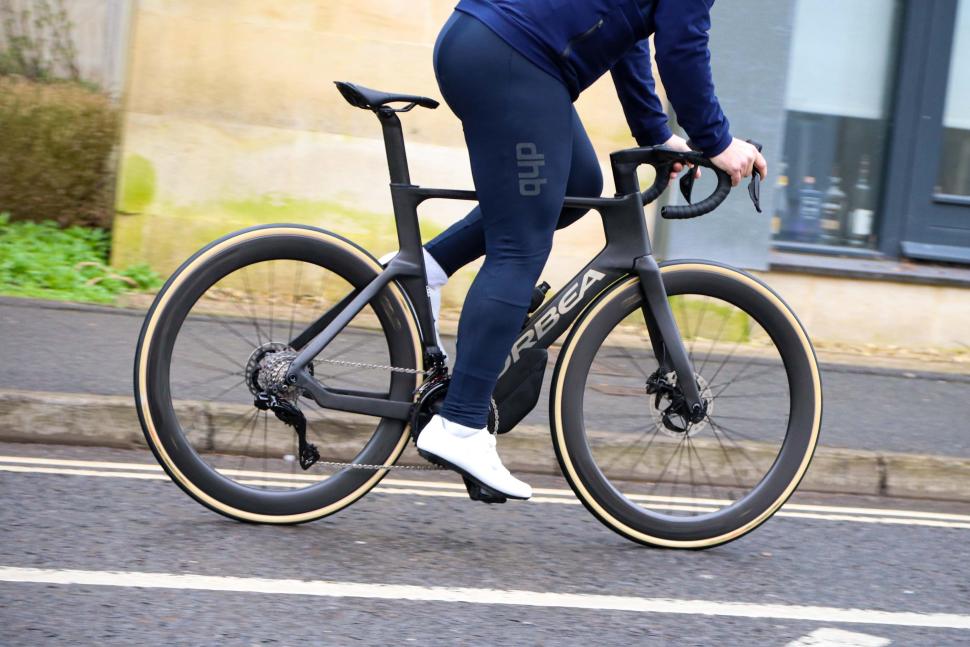











































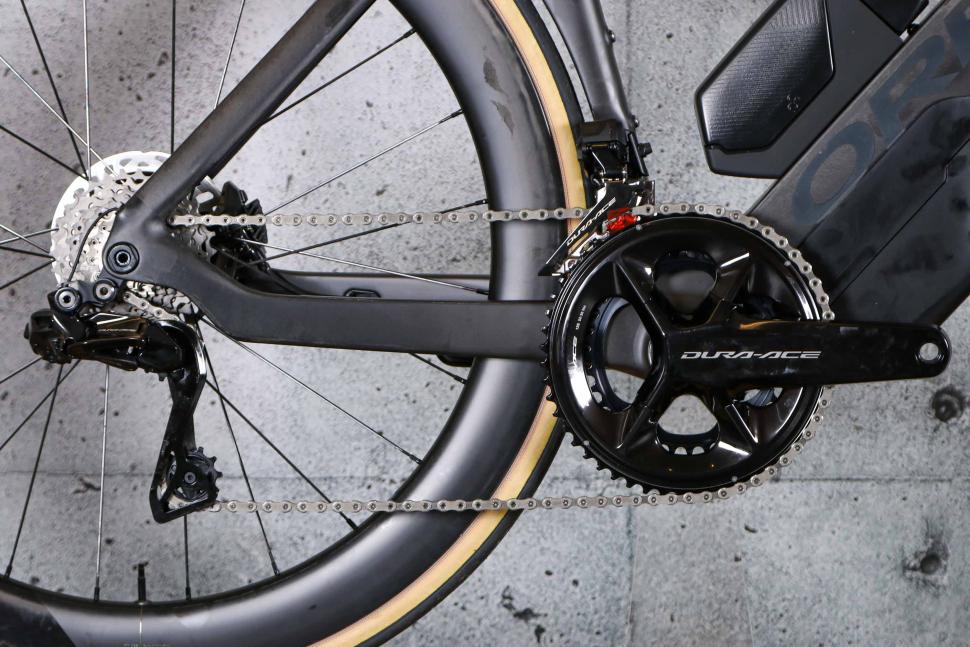


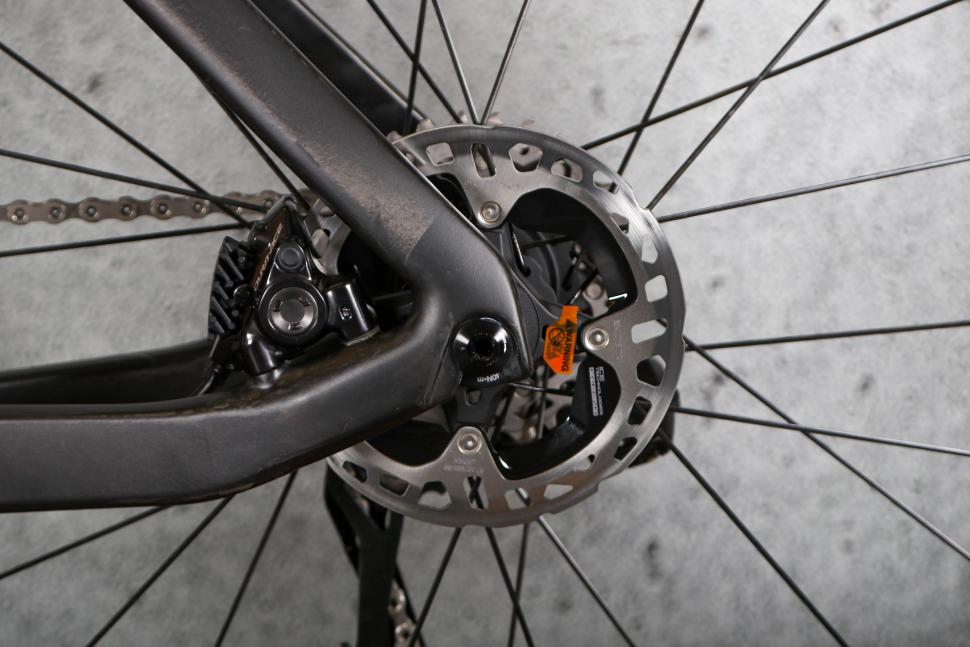




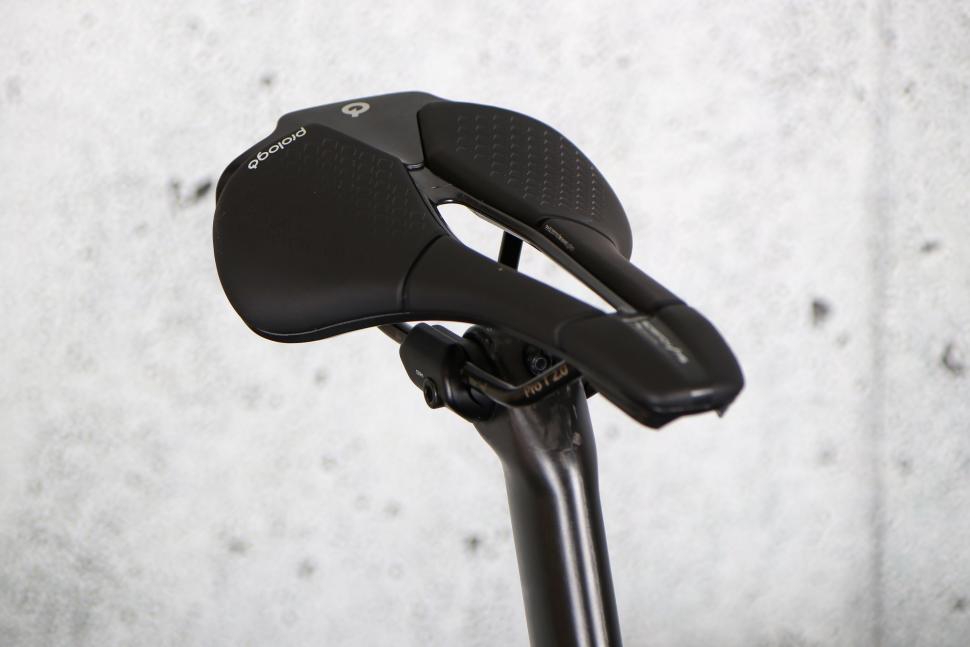

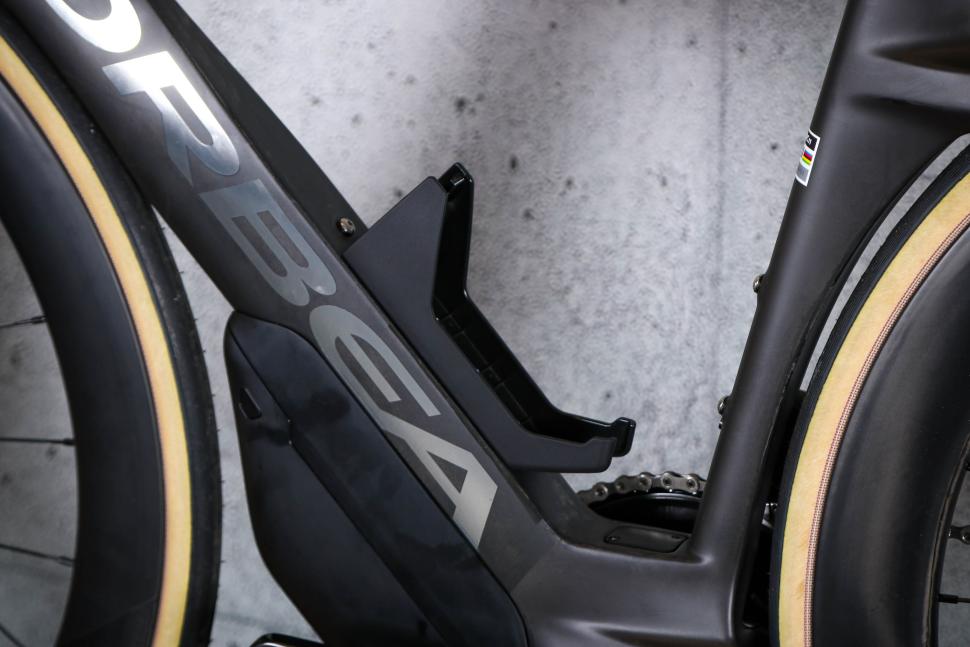

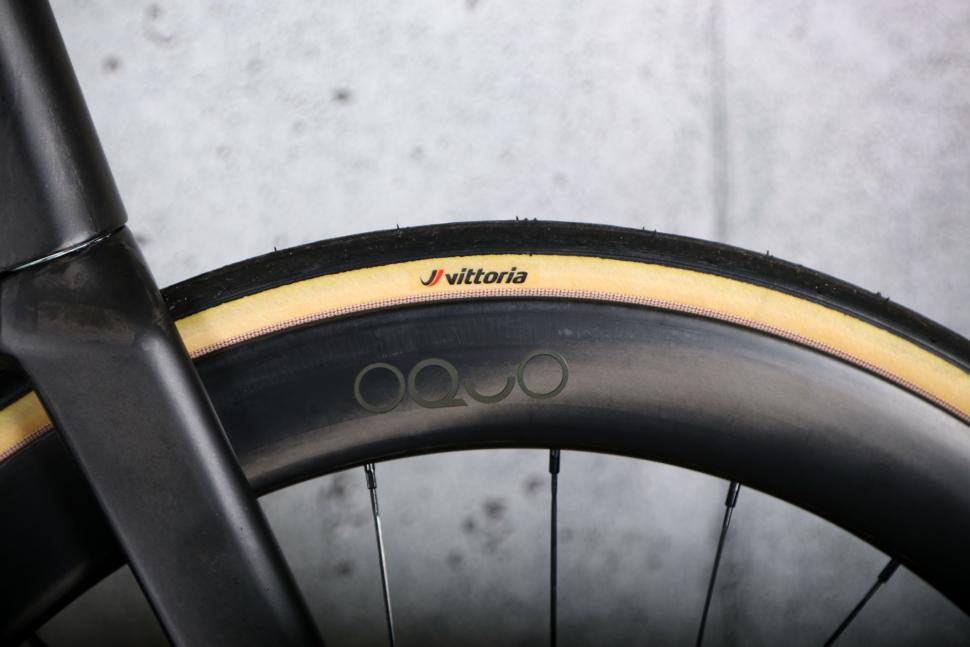





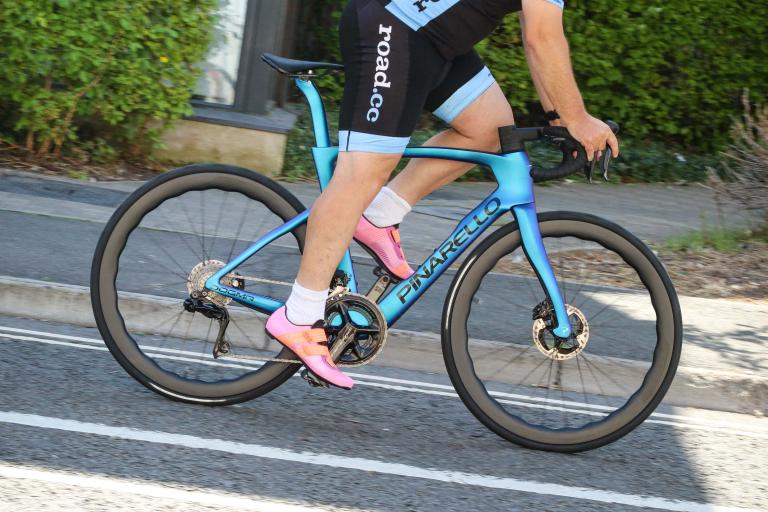
Add new comment
2 comments
Thanks for the review. I like that Orbea have included aero extras and wish more manufacturers would stick two fingers up at the UCI - at least in terms of selling fast gear to consumers.
£11.5k for a bike weighing over 8kg that's 2 fingers to customers let alone UCI